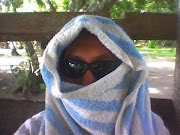I've come across this article from
The New York Times website...

Chubby Gets a Second Look
Published: November 11, 2007
HEALTH and beauty. They seem inextricable. That smiling, slender woman on the cover of Self magazine. The ripped guy looking out from the pages of Men’s Health. They’re thin. Their eyes are bright. They look like they’re bursting with energy.

Erik T. Johnson
They may well be. But they might be better off if they had listened to their grandmother and put a little meat on those bones. Chubby, it turns out, may be the new healthy. Who knows if it will be the new beautiful.
Two years ago, federal researchers found that overweight people had the lowest mortality rate of any weight group. Investigating further, they were able to link causes of death to specific weights. Obese people had more deaths from heart disease, they reported last week. And thin people? They had more deaths from everything but cancer and heart disease.
But there were 100,000 fewer deaths among the overweight than would have been expected if those people had been of normal weight. This is what might politely be called the chubby category, with body mass indexes (a measure of weight for height) of 25 to 30. A woman, for instance, who is 5 feet 4 inches tall and weighs between 146 and 175 pounds.
About a third of Americans fall into that range, defined, less politely, as “overweight” by Centers for Disease Control and Prevention.
That’s not exactly the Madison Avenue vision of beauty. Perhaps Rubens, the Baroque master, was closer to the mark. The women in his paintings were considerably rounder than the women celebrated today. “Over upholstered,” as Holland Cotter, a culture critic for The New York Times, once put it.
It’s too soon to say. But it may not be a bad thing, say some social scientists. “The ideal image of a woman is almost impossible for anybody to achieve,” said Peter J. Brown, an anthropologist at Emory University.
Dr. Brown is among those social scientists who say that being thin really isn’t about health, anyway, but about social class and control.
When food was scarce and expensive, they say, only the rich could afford to be fat. Thus, in the 19th century, well-do-do men with paunches joined Fat Men’s Clubs, which gave rise to the term “fat cat.” Heavy women of that era were stage stars. Lillian Russell, “airy fairy Lillian, the American beauty,” weighed 200 pounds.
Those notions of fashion gradually gave way to a more streamlined physique.
The sponsors of a 1904 contest to find “the best and most perfectly formed woman” settled on Emma Newkirk, an athlete from Santa Monica, Calif., who stood 5-foot-4 ¼, measured 35-26-36, and weighed 136 pounds. That would have given her a B.M.I. of 23.3 — not overweight, but close.
The body mass indexes of Miss America winners, according to a 2000 study, have been steadily decreasing since 1922, so much so that for most winners in the last three decades their indexes would cause them to be considered underweight.
How thin is thin enough? One Miss America had a body mass index of 16.9, which is considerably underweight. A woman of Emma Newkirk’s height would have had to weigh 99 pounds to have that body mass index. That may help explain why, in recent years, as many as two-thirds of women and more than half of men have expressed dissatisfaction with their weight.
How did we get to this point?
George Armelagos, an anthropologist at Emory University, calls it the King Henry VIII -Oprah Winfrey effect.
Henry VIII, king of England in the 16th century, “was huge,” he said, which was a symbol of his wealth. To get that way, Dr. Armelagos said, “it took 100 people collecting food for him and cooking it.” Compare that to the billionaire Oprah Winfrey. “She has to have a dietitian and cook and a trainer so she doesn’t get to be like that,” he said.
Today, poorer people are most likely to be fat and so, said Abigail Saguy, a sociologist at the University of California at Los Angeles, “fatness is associated with downward mobility.” Weight has thus become a moral issue couched in health concerns, she said. After a while, it almost becomes inconceivable that anyone would see a fat person differently.
So what does this all mean for the chubby among us, who may be the healthiest, or at least, the most likely to live the longest? Will chubby become fashionable? That may have to await the day when chubby becomes inextricably linked to health, or privilege.
Dr. Brown, the Emory anthropologist, related how in the 1950s, white South African public health officials tried to warn people in a Zulu community about the dangers of obesity. They put up two posters.
One showed a fat woman standing next to an overloaded truck with a flat tire. “Both carry too much weight,” the poster said. The other showed a thin woman sweeping up dirt under a table while a fat woman stood nearby, leaning on the table for support. “Who do you want to look like,” the poster asked.
The Zulus thought the first poster showed a fortunate woman, so rich that she was fat and with so many possessions that her truck was overloaded. As for the second poster, they thought the thin woman was the servant, working for the obviously affluent fat woman.





